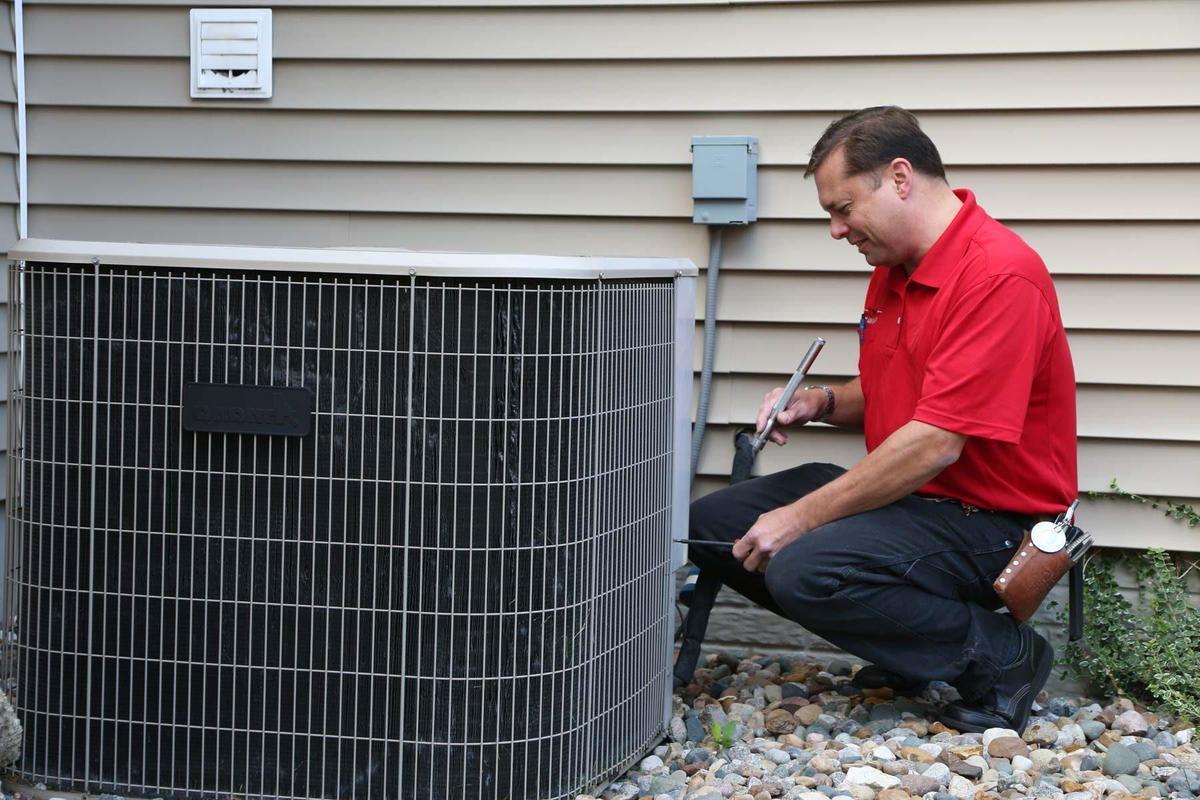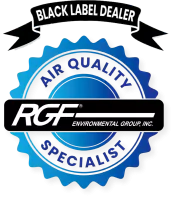Is your outdoor AC fan sitting still when it should be spinning? Nothing’s worse than walking outside on a hot day and noticing that the fan has completely stopped moving. Not only does this mean your home won’t stay cool, but it could also signal bigger problems with your AC system.
That outdoor fan does more than just spin – it’s actually the workhorse that helps push all the heat from inside your house out into the open air. Without it running properly, your AC has to work overtime, which usually leads to higher energy bills and potential damage to other parts.
Maybe it’s just a tripped breaker, or perhaps something more serious like a burnt-out motor. Whatever the cause, a non-spinning fan needs attention pretty quickly. The silver lining? You might be able to figure out what’s wrong (and sometimes even fix it) by following some basic steps.
Ready to get that fan spinning again? Let’s dig into what might be causing the problem.

How the Outdoor AC Fan Works
That outdoor fan sitting in your AC unit isn’t just spinning for show – it’s actually doing some heavy lifting to keep your home cool. When it stops working, you’ll quickly understand why it’s such a vital part of your cooling system.
Moving Heat Where It Belongs
Your AC doesn’t actually create cold air – instead, it moves heat from inside your home to the outdoors. The outdoor fan is crucial in this process, working with several other parts to keep that heat transfer happening smoothly.
Let’s break down the main components working with your fan:
Condenser Unit
This is the big metal box sitting outside your house. Inside, you’ll find coils filled with refrigerant that carry heat from your home. The fan blows air across these coils, helping release that heat into the outdoor air.
Fan Motor
A sturdy electric motor turns the fan blades. These motors need to handle whatever weather comes their way while keeping those blades turning at just the right speed. Without a working motor, you lose the airflow needed for cooling.
Capacitor
The capacitor gives your fan motor the power boost it needs to start up and keep running. Many fan problems start with this small but important part wearing out.
Compressor
While the compressor isn’t part of the fan itself, these parts work as a team. The compressor puts pressure on the refrigerant, and the fan helps release the heat. If your fan stops, your compressor can overheat pretty quickly.
When everything’s working right, these parts work together like a well-oiled machine. But if any piece of this puzzle fails, your cooling efficiency drops or stops completely.
Common Causes of a Non-Spinning Fan
If your outdoor AC fan has stopped spinning, don’t panic. Several everyday issues could be causing the problem, from simple fixes to more complex troubles that need professional attention.
Electrical Problems
Your AC fan needs proper power to run, and electrical issues are often behind a non-spinning fan. Here’s what typically goes wrong:
The circuit breaker might have tripped, cutting power to your unit. Sometimes the fuses in the disconnect box near your outdoor unit blow out. You might also have loose wiring connections or corroded terminals that interrupt power flow.
Component Issues
The parts inside your AC work hard and can wear out over time:
The capacitor often quits before other parts do. Look out for obvious signs like bulging or leaking on its surface, or if you notice burning smells near the electrical box. Sometimes the fan tries to start but just can’t keep going – that’s a classic capacitor problem.
Fan motors can burn out from years of use, too much heat, or when their bearings fail. When motors go bad, they usually need replacing rather than repairing.
Physical Problems
Sometimes it’s just mechanical trouble stopping your fan:
Fan blades can break or bend if something hits them. The mounting hardware might work loose and cause wobbling. Older units with belts can have those belts snap or wear out. Motor bearings sometimes lock up, especially if they haven’t been maintained.
Outside Troubles
The area around your AC can cause problems too:
Leaves, sticks, and yard debris often block the fan. Dirt buildup on the blades throws them off balance. When air filters get too clogged, the whole system struggles. In cold weather, ice can form and stop everything from working right.
Remember – these problems tend to snowball if you ignore them. A blocked air filter makes your motor strain harder, which could make it fail sooner than it should. Getting regular maintenance helps catch small issues before they turn into bigger headaches.
Diagnostic Steps for Homeowners
Got a stubborn AC fan that won’t spin? Before you call for repairs, you might want to do some basic detective work. Just remember – your safety matters most when poking around AC equipment.
Power needs to be your first concern. Cut it completely by turning off both the main circuit breaker and the disconnect switch near your outdoor unit. Wait a bit before you start looking around – those electrical components need time to discharge. While you’re waiting, make sure everyone stays clear of the work area.
A good visual check can tell you a lot. Take your time looking for obvious problems like sticks or leaves stuck in the fan blades. Sometimes you’ll spot bent blades or dirty coils causing trouble. Wiring problems often jump right out. Look for anything that seems loose or chewed up.
You can safely check a few electrical basics too. Maybe your circuit breaker tripped and just needs resetting. The disconnect box might have blown fuses. Double-check that your thermostat’s working right.
Watch out for trouble signs while you’re looking things over. Burning smells near electrical parts spell trouble. So do melted wires or oily spots that might mean leaks. If the capacitor looks swollen up like a balloon, that’s bad news.
Keep in mind – finding the problem isn’t the same as fixing it. Most AC repairs need special tools and know-how that only trained techs have. When in doubt, call someone who knows what they’re doing. Better safe than sorry when it comes to AC repairs.
Troubleshooting & Solutions
Once you’ve spotted what might be wrong with your outdoor AC fan, there are several steps that could get things running again. Just keep in mind – while some fixes are pretty straightforward, others need a professional’s touch to avoid making things worse.
Got a tripped circuit breaker? That’s usually an easy fix – just reset it. But watch out if it keeps tripping. That’s your electrical system trying to tell you something’s not right, and you’ll want an expert to figure out what’s causing it. The same goes for blown fuses in your disconnect box. Sure, you can swap them out, but if they keep blowing, there’s probably a bigger issue at play.
Your capacitor might be the culprit if you spot it looking swollen or burnt. But here’s the thing – even when the power’s off, capacitors pack a serious electrical punch. Leave that replacement job to someone with the right tools and know-how.
Finding leaves and debris around your unit? Go ahead and clear that stuff away to help your fan breathe better. Just be careful while you’re cleaning – if you notice any bent or broken fan blades, stop right there. Those need professional attention to avoid throwing the whole thing off balance.
Poor airflow often starts with something as simple as a dirty filter. Swap it out every few months and make sure nothing’s blocking your vents. These small steps can make a big difference in how hard your fan has to work.
Running an older unit with a belt? Take a quick look at it for cracks or loose spots. Knowing what’s wrong helps when you call in a pro to fix it.
Bottom line – if you’re not completely sure about any repair, it’s better to make that service call than risk making things worse.
Preventative Maintenance
Taking care of your AC’s outdoor fan isn’t complicated, but it does require attention throughout the year. Regular maintenance helps avoid those sweaty summer days when your system decides to quit working.
Professional tune-ups each spring make a big difference in how well your fan performs during hot weather. A good technician will check the electrical parts, test how well the motor runs, and make sure everything works like it should. Catching problems early saves you money and headaches down the road.
Your outdoor unit needs some basic care between service visits too. Keeping it clear of yard debris matters more than most people realize. Those leaves and grass clippings that pile up around the unit can really mess with proper airflow. Fall cleanup becomes extra important when leaves start dropping.
Don’t forget about your air filters – they affect your fan more than you might think. When filters get clogged, your fan motor works overtime trying to push air through. Take a peek at them monthly during summer and swap them out when they look dirty.
Pay attention to how your system sounds and performs. If something seems off – maybe the fan sounds different or your home isn’t cooling like it used to – don’t ignore it. Small changes often warn us about bigger problems coming.
Simple stuff like keeping your outdoor unit level and trimming back bushes helps too. Your fan works best when air can flow freely around the unit. A little basic upkeep goes a long way toward keeping everything running smoothly.
When to Call a Professional
There comes a point where DIY troubleshooting needs to give way to professional expertise. Knowing these boundaries helps protect both your safety and your AC system’s integrity.
Think twice before tackling any electrical issues beyond resetting a breaker or changing a fuse. The complex wiring systems in modern AC units need proper training to repair safely. One wrong move with a capacitor or motor connection could lead to serious injury or worse.
Your system’s refrigerant is another no-go zone for DIY repairs. Those ice formations you might spot on your outdoor unit, or that hissing sound you hear? Both might mean refrigerant troubles. By law, only certified technicians can handle these repairs – and for good reason.
Strange noises and vibrations coming from your unit often point to compressor problems. These repairs need special tools and deep technical know-how. Trying to fix compressor issues yourself usually leads to bigger headaches down the road.
Finding the right professional matters too. A solid HVAC tech should carry current certifications and proper insurance. They won’t mind showing you their credentials or explaining what they’re doing. Good technicians take time to diagnose problems thoroughly instead of jumping to quick fixes.
Watch out for anyone pushing expensive replacements before checking things out properly. Real pros will walk you through their findings and lay out your options clearly. They’ll back their work with warranties and won’t pressure you into rushed decisions.
Enhancing AC System Longevity
Want to get more years from your AC system while cutting down on energy costs? Let’s look at some practical ways to upgrade your system and make it work smarter, not harder.
Modern replacement parts pack more punch than their older counterparts. Take fan motors, for example. Today’s models run more efficiently and last longer than what was available even a few years ago. Variable-speed motors give you better control over your home’s cooling and use less power doing it. Sure, they cost more upfront, but the money you save on energy bills and fewer repairs makes them worth considering.
Your thermostat makes a bigger difference than you might think. Switching to a programmable model helps your AC work more efficiently by matching your daily schedule. Instead of cooling an empty house all day, it adjusts automatically to save energy when you’re away and keeps things comfortable when you’re home.
Don’t overlook your home’s insulation – it’s a key player in how hard your AC has to work. Poor insulation forces your system to run longer and more often. Take a look in your attic and around windows and doors for spots where cool air might escape. Fixing these trouble spots helps your system run less frequently.
Adding a separate dehumidifier can take some pressure off your AC, especially during muggy weather. When your AC isn’t struggling to handle both cooling and moisture control, it tends to last longer and work better.
Remember to keep up with maintenance after making any upgrades. A good technician will help you get the most from your improved system by keeping everything properly adjusted and running smoothly.
Your Trusted AC Experts in West Des Moines
When your outdoor AC fan stops spinning, you need more than a quick fix – you need a lasting solution from people who know their stuff. While this guide helps spot common problems, getting your AC back to peak performance usually takes a skilled hand.
Here in West Des Moines, homeowners have trusted Holt Plumbing & Heating since 1947. Our repair crews know local homes and cooling systems inside and out. We’ve built our reputation by fixing problems right the first time.
Being family-owned means we treat your home like our own. No cutting corners, no pushy sales tactics – just honest work from certified technicians who take pride in keeping Iowa homes comfortable.
Ready to get your AC fan spinning again? Let Holt Handle That! Give us a call at (515) 209-2360 to schedule service today.












